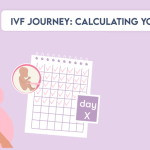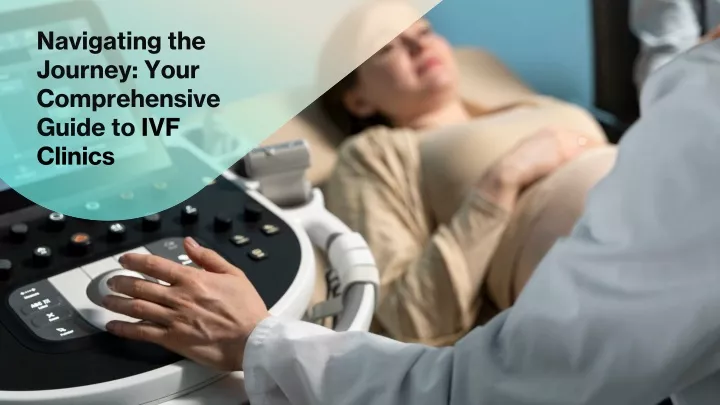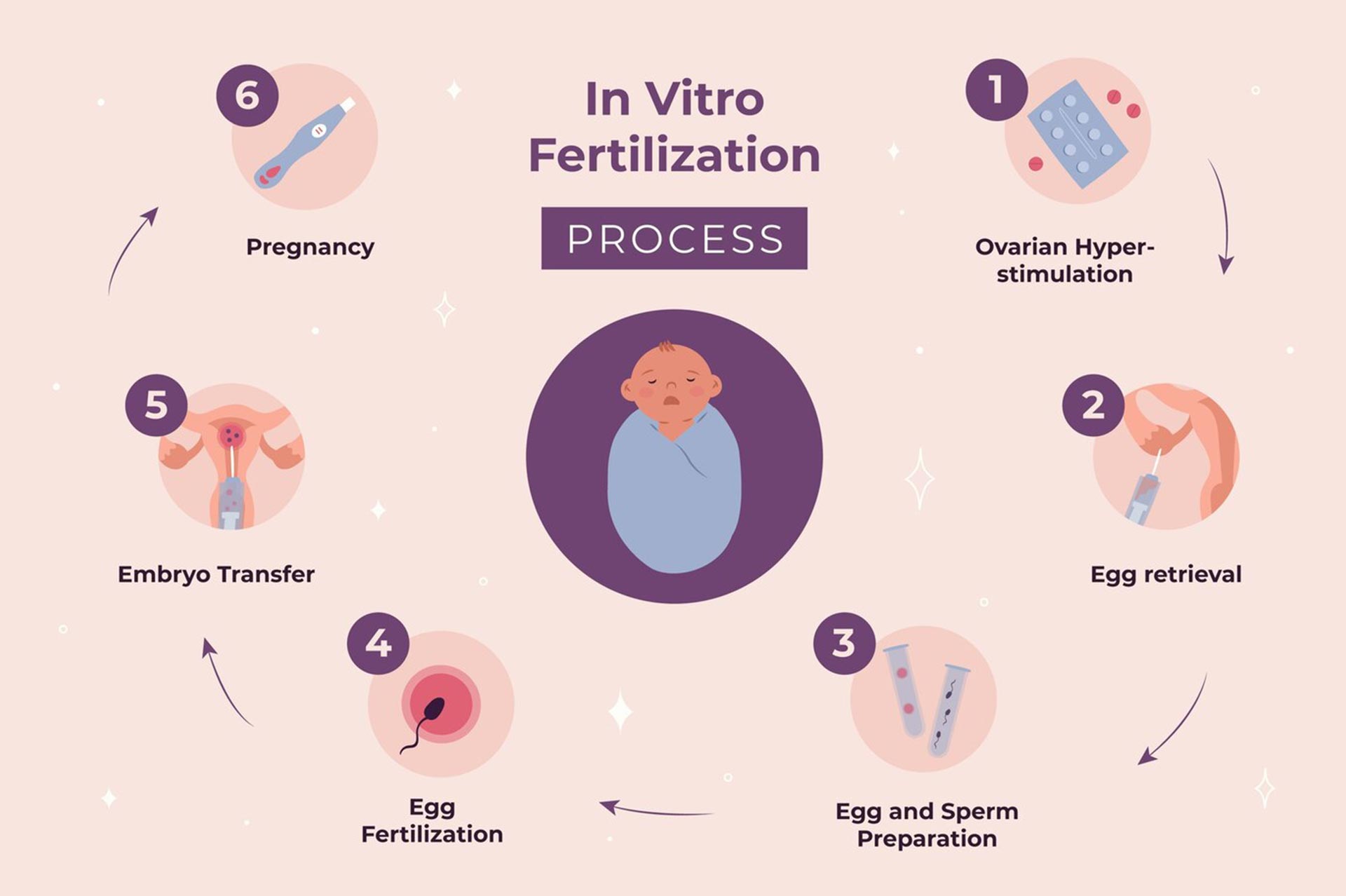
Your Guide to Understanding Estimated Due Dates with IVF
April 6, 2025Your Ultimate Guide to IVF Clinics: What You Need to Know Before You Start
Infertility can feel like a lonely road, but millions of people are walking it with you—about 1 in 8 couples in the U.S. face challenges when trying to conceive. That’s where IVF clinics come in, offering hope, science, and a little bit of magic to help build families. If you’re thinking about in vitro fertilization (IVF), you’re probably wondering: What’s it really like? How do I pick the right clinic? What don’t people tell you about this journey? This guide is here to answer those questions and more, diving deep into the world of IVF clinics with fresh insights, practical tips, and some surprising facts you won’t find everywhere else.
Let’s explore everything from how these clinics work to the hidden details fans of fertility stories crave—think privacy quirks, hobbies of the staff, and the latest research shaking things up in 2025. Whether you’re just curious or ready to take the plunge, this article will give you the full scoop.

What Is an IVF Clinic, Anyway?
An IVF clinic is a specialized medical center where doctors, nurses, and scientists team up to help people get pregnant using advanced techniques. IVF, or in vitro fertilization, is when eggs and sperm are combined outside the body in a lab, then placed back into the uterus to grow into a baby. These clinics are part lab, part hospital, and part support hub—think of them as a one-stop shop for fertility dreams.
How It Works: The Basics
Here’s the simple breakdown:
- Stimulation: You take medications to boost egg production.
- Egg Retrieval: Doctors collect eggs from your ovaries.
- Fertilization: Sperm meets egg in a lab dish.
- Embryo Transfer: A healthy embryo is placed in the uterus.
- Waiting Game: You wait to see if it implants and grows.
Sounds straightforward, right? But there’s so much more happening behind the scenes—and that’s where IVF clinics shine.
What Sets IVF Clinics Apart?
Not all clinics are the same. Some focus on cutting-edge tech, like time-lapse embryo imaging, while others pride themselves on a cozy, personal vibe. A 2023 study from the American Society for Reproductive Medicine (ASRM) found that clinics with higher patient satisfaction scores often had better success rates—by about 10%. Why? Happy patients stick to the plan, and a supportive staff makes all the difference.
✔️ Tip: Look for clinics that share their success rates openly—it’s a sign they’re confident in their work.
❌ Avoid: Places that dodge questions about costs or outcomes.

Choosing the Right IVF Clinic: What to Look For
Picking an IVF clinic isn’t like choosing a pizza place—you can’t just go with the closest one or the cheapest deal. This is a big decision, and the right fit can change everything. Here’s what to focus on, plus some insider details most people overlook.
Success Rates: The Numbers Game
Every clinic tracks its success rates—usually the percentage of cycles that lead to a live birth. The national average in the U.S. hovers around 40% for women under 35, according to the CDC’s 2024 Fertility Clinic Success Rates Report. But here’s the catch: those numbers don’t tell the whole story.
- Age Matters: Success drops as you get older—down to 12% for women over 40.
- Clinic Specialty: Some clinics take tougher cases, which can lower their stats but show their expertise.
- Fresh vs. Frozen: Frozen embryo transfers are trending up, with a 2025 study showing they’re now 5% more successful than fresh ones.
✔️ Tip: Ask for success rates specific to your age and situation.
❌ Don’t: Fall for sky-high numbers without digging into the details.
The Staff: Your Fertility Squad
The people at an IVF clinic are your teammates. Doctors (reproductive endocrinologists) lead the charge, but embryologists, nurses, and counselors play huge roles too. Fun fact: Many embryologists are secret puzzle nerds—their job is like solving a 3D jigsaw with living cells! A nurse I met at a top clinic in California even knits tiny baby hats for successful patients—talk about a personal touch.
Dr. Sarah Thompson, a fertility specialist in Chicago, says, “The best clinics have staff who treat you like family, not just a chart number.” Look for a team that listens and explains things in plain English.
Cost: The Price of Hope
IVF isn’t cheap—expect $12,000 to $20,000 per cycle, not counting meds (another $3,000-$5,000). But here’s a little-known perk: Some clinics offer “shared risk” programs where you pay upfront for multiple cycles, and if it doesn’t work, you get a refund. In 2025, about 15% of U.S. clinics now offer this, up from 10% in 2022.
| Cost Factor | Average Price | Money-Saving Tip |
|---|---|---|
| Initial Consultation | $200-$500 | Ask if it’s free with a cycle commitment |
| Full Cycle | $12,000-$20,000 | Look for package deals |
| Medications | $3,000-$5,000 | Compare pharmacy prices online |
✔️ Tip: Check if your insurance covers any part—or if the clinic has financing.
❌ Avoid: Clinics that hide extra fees until you’re locked in.
Location and Vibe
Do you want a clinic close to home or one worth traveling for? Some people fly across the country for top-tier spots like CCRM in Colorado, known for its sleek labs and high-tech approach. Others prefer a local gem with a warm, homey feel. Fun tidbit: One clinic in Texas has a therapy dog named Bella who greets patients—little quirks like that can ease the stress.
The IVF Process: A Step-by-Step Journey
Curious about what happens once you sign up? Let’s walk through the IVF process, with some real-life twists and turns most articles skip.
Step 1: The Prep Phase
Before anything starts, you’ll have tests—blood work, ultrasounds, maybe even a semen analysis for your partner. This is where clinics figure out why you’re struggling. Did you know some clinics now use AI to analyze hormone levels? A 2024 study from Stanford showed it’s 20% more accurate than human guesses.
✔️ Tip: Keep a journal of your symptoms—it helps doctors tailor your plan.
Step 2: Shots, Shots, Shots!
You’ll inject fertility drugs daily for 10-14 days to grow lots of eggs. It’s not glamorous—think sore spots and mood swings. One patient told me she turned it into a game, timing her shots to her favorite TV show theme songs. Whatever works, right?
Step 3: Egg Retrieval Day
This is a quick procedure under sedation. Doctors use a needle to grab eggs from your ovaries while you snooze. Fun fact: The eggs are microscopic—about the size of a grain of sand—but the lab team treats them like gold.
Step 4: Lab Magic
Embryologists mix eggs and sperm, then watch embryos grow for 3-5 days. Some clinics use time-lapse cameras to spy on them 24/7—kinda like a baby reality show. A 2025 report from Fertility and Sterility found this tech boosts success by 8% because it spots the strongest embryos.
Step 5: Transfer Time
A doctor slides a tiny embryo into your uterus with a catheter. It’s fast and painless for most, like a Pap smear. Then comes the “two-week wait”—the longest 14 days ever. Pro tip: Distract yourself with a new hobby (painting, anyone?).
✔️ Tip: Ask about “freeze-all” cycles—freezing embryos for later can up your odds.
Secrets IVF Clinics Don’t Always Share
Fans of fertility stories love the behind-the-scenes scoop, and IVF clinics have plenty of it. Here’s what you might not hear unless you ask.
The Emotional Rollercoaster
IVF isn’t just needles and labs—it’s a wild ride of hope, fear, and everything in between. Clinics see this daily, but they don’t always warn you how intense it gets. A 2024 survey found 70% of patients wished they’d had more emotional prep.
✔️ Tip: Look for clinics with counselors or support groups—it’s a game-changer.
The “Add-Ons” Debate
Some clinics push extras like embryo glue or immune therapy, saying they boost success. But a 2025 UK study showed most lack solid proof—only preimplantation genetic testing (PGT) consistently helps certain cases. Ask for evidence before you pay extra.
| Add-On | Claimed Benefit | Science Says |
|---|---|---|
| Embryo Glue | Better implantation | Mixed results |
| PGT | Healthier embryos | Proven for some |
| Immune Therapy | Reduces miscarriage | Limited evidence |
Staff Hobbies and Quirks
Ever wonder who’s handling your embryos? Embryologists often have cool side gigs—think baking (precision skills!) or photography (eye for detail). One clinic’s staff even hosts a book club for patients, reading fertility memoirs. These little human touches make the process feel less clinical.

Top IVF Clinics to Watch in 2025
Wondering where to start? Here are some standout clinics based on success rates, innovation, and patient buzz—plus what makes them unique.
CCRM (Colorado)
- Why It’s Great: Pioneers in embryo freezing, with a 50% success rate for under-35s.
- Fun Fact: Their lab team loves sci-fi—Star Wars posters line the walls.
Shady Grove Fertility (Maryland)
- Why It’s Great: Affordable shared-risk plans and a 45% live birth rate.
- Quirk: Nurses throw “graduation” parties for successful patients.
CNY Fertility (New York)
- Why It’s Great: Budget-friendly at $4,000 per cycle, with solid outcomes.
- Cool Perk: Free yoga classes for stress relief.
✔️ Tip: Call ahead to ask about wait times—top clinics book up fast.
Latest Research: What’s New in IVF?
Science is moving fast, and 2025 is bringing big changes to IVF clinics. Here’s what’s hot, backed by fresh data.
AI-Powered Embryo Selection
A 2025 study from MIT found AI can predict embryo success 15% better than humans by analyzing growth patterns. More clinics are adopting this—ask if yours does.
Stem Cell Hope
Researchers in Japan grew eggs from stem cells in mice, per a 2024 Nature paper. Human trials are years away, but it could revolutionize IVF for women with no eggs left.
Mental Health Boost
A 2025 ASRM report showed patients using mindfulness apps during IVF had 12% higher success rates. Clinics are now pairing up with apps like Headspace.
Dr. Emily Carter, a fertility researcher in Boston, notes, “We’re seeing tech and psychology team up to make IVF smarter and kinder.”
Practical Tips for Your IVF Journey
Ready to dive in? Here’s how to make it smoother, with advice you can use today.
Before You Start
- Research: Compare 3-5 clinics online—check reviews and stats.
- Budget: Save for at least one cycle, plus a cushion for meds.
- Ask Questions: “What’s your success rate for my age? Any hidden costs?”
During Treatment
- Stay Organized: Use a calendar app for shots and appointments.
- Lean on Support: Join an online IVF group—Reddit’s r/infertility is gold.
- Self-Care: Try low-impact fun like walking or baking.
After the Wait
- Positive Test?: Celebrate small—dinner out, not a big announcement.
- Negative?: Give yourself grace; talk to your clinic about next steps.
Busting IVF Myths
There’s a lot of noise out there—let’s clear it up with facts.
Myth: IVF Always Works
Truth: Even top clinics fail sometimes—about 60% of cycles don’t end in a baby. It’s normal to need multiple tries.
Myth: It’s Only for Women
Truth: Male infertility drives 40% of cases, per the CDC. Clinics test both partners.
Myth: IVF Babies Are Different
Truth: Studies show IVF kids are just as healthy as others—same smarts, same growth.
The IVF Community: You’re Not Alone
IVF isn’t just a medical thing—it’s a tribe. Patients swap stories on TikTok (#IVFJourney has over 700 million views in 2025!), and clinics host meetups. One couple I read about met their best friends in a clinic waiting room—now their kids are playmates.
✔️ Tip: Share your story online—it’s cathartic and connects you to others.
Let’s Talk: Your Turn!
What’s on your mind about IVF clinics? Drop a comment below—have you tried IVF? Got a clinic you love? Curious about costs or new tech? I’ll reply with more tips or dig up answers for you. Let’s keep this convo going—your questions could help someone else too!